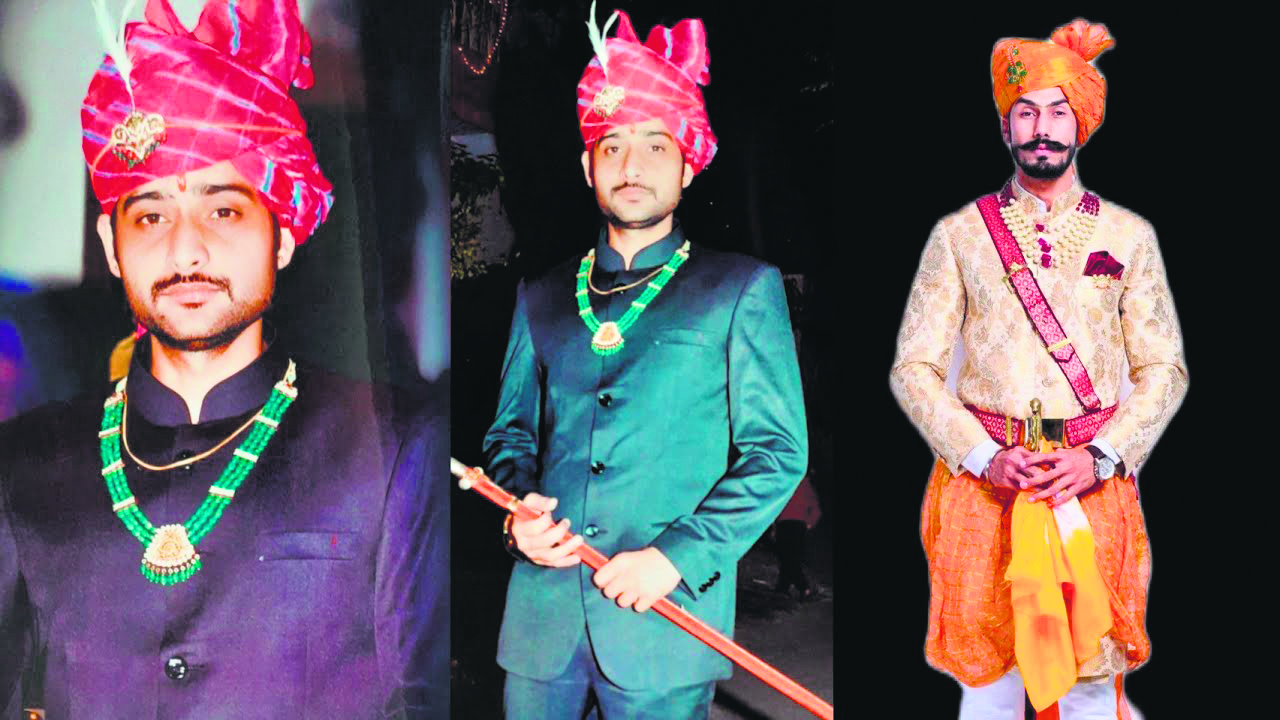Indian Royalty reeks of affluent adornments and shimmering stones. While the traditional indian culture dictates wearing jewelry a norm, kings and queens gave a new meaning to the usage of precious ornaments.Talking about the Maharajas who not only embraced and promoted their traditional customs, culture and heritage but also showcased their refined sense of style through exquisite attire and posh jewelry. Their love for jewelry was world famous, which gave way to it becoming a symbol of royalty and served as a visual representation of the Maharajas’ status and authority. The more elaborate and intricate the jewelry, the higher their rank and influence. Besides the show of power, Maharajas adorned themselves and their wives with exquisite jewelry to exhibit their immense wealth reflecting their prosperity and ability to support a lavish lifestyle. Also, jewelry was also believed to possess protective qualities. Adorning themselves and their wives with precious gemstones and amulets and considering them as safeguards against evil spirits and misfortune was common amongst Indian Maharajas and their households. Following would be famous jewelry of Indian Maharajas narrating tales of the historic legacy.
The Emerald Necklace of the Maharaja of Nawanagar
The Maharaja of Nawangar was well-known for his luxurious jewelry collection, which included remarkable pieces like the 500-carat Nawanagar necklace, recreated for the Ocean’s movie, and the unique lemon yellow “tiger’s eye” diamond. Among these treasures, one particular piece offers a glimpse into India’s rich heritage. Designed by Jacques Cartier in the famous art-deco style, it features 17 rectangular Colombian Emeralds, weighing a total of 277 carats. The centerpiece of this exquisite jewelry is a 70-carat emerald, rumored to have once belonged to a former Sultan of Turkey.
Diamond sarpech – Maharaja Duleep Sing of Lahore
Maharaja Duleep Singh of Lahore, the last ruler of the Sikh empire wore a diamond sarpech on his turban. A successor to Maharaja Ranjit Singh, he carried forward the legacy of splendor associated with his royal heritage. The diamond sarpech being specially crafted for turbans is adorned with diamonds and features three majestic plumes. Adding to its allure, the sarpech consists of a center piece, an exquisite emerald. Reserved exclusively for turbans of royalty, the distinctive ornament showcases extravagance and creates a display of opulence.
The ‘Indore Sapphire’ Taveez Bead Pendant Necklace
Indore Sapphire’ Taveez Bead Pendant Necklace is mounted by the prestigious house of Cartier. It features an oval-shaped sapphire taveez bead weighing an impressive 23.20 carats, which dates back to the 18th century. Adding to its allure, the bead is accompanied by an 18k white gold finelink chain measuring 24 1/8 inches. The chain itself bears the signature of MT Cartier and is a testament to its craftsmanship, as well as the grandeur and elegance associated with the Indian royalty.
Boasting of an illustrious provenance, It once belonged to Maharaja Yeshwant Rao Holkar II of Indore, a prominent figure in Indian royalty. It also has been showcased at prestigious venues all over the world such as the Victoria and Albert Museum in London, the Miho Museum in Koka, the Grand Palais in Paris, the Doge’s Palace in Venice, the Palace Museum in Beijing, and the de Young Legion of Honor in San Francisco.
Diamond dastar of Maharaja Shrimant Sir Ranjit Singhji Sahib Bahadur of Ratlam
Besides the renowned Nizams and Gaekwars, the rulers of princely states like Ratlam, Benares, and Kapurthala also displayed a fondness for exquisite jewelry. In his renowned portrait of Maharaja Shrimant Sir Ranjit Singhji Sahib Bahadur of Ratlam, his attire showcases a remarkable display of opulence.
Adorning his turban, or dastar, is a mesh of intricate sarpattis crafted from diamonds, pearls, and other precious gemstones. Furthermore, he wears a kundan haar adorned with diamonds, pearls, and gemstones, along with a pearl choker and earrings. Even the Maharaja’s angarkha, or garment, is embellished with a decorative pattern of sequins and gold thread.
Kundan haar of Maharaja Prabhu Narayan Singh of Banaras
Maharaja Prabhu Narayan Singh of Benares used to take his royal jewels out for the occasional airing. In this photograph, the Maharaja is seen wearing a staggering Kundan diamond haar made with some other precious gemstones. He is seen wearing the typical sarpech with an attached feather plume. He is also wearing many other intricate articles of jewellery that include peal and polki diamond shoulder pads, bazubandhs, a bejewelled sword, a bejewelled belt, bracelets as well as rings. All of these are seen on a ceremonial court outfit along with the Star of India brooch.
The Tiger’s Eye Turban Ornament
In 1937, Maharaja Digvijaysinhji of Nawanagar requested jeweler Cartier to create a turban ornament using a rare and stunning diamond known as the ‘Tiger Eye’. The diamond, weighing 61.50 carats and boasting a whiskey-colored hue, was surrounded by baguette-cut diamonds in a traditional Indian jewelry design.
The Tiger Eye diamond, originally discovered in the Orange River in South Africa, was purchased by the Maharajah from Cartier and remains in its original platinum-and-diamond setting. The versatile design of the turban ornament allows it to be transformed into a clip brooch by removing a frond of diamonds, and the central setting can be unscrewed and set into other pieces of jewelry. Additionally, the setting can be un-clipped, freeing the diamond completely.
The name ‘The Eye of the Tiger’ is inspired by the majestic nature of the tiger itself, symbolizing power and commanding attention. The diamond’s impressive golden coloring and silky luster evoke the image of a wild Bengal tiger in the jungle. According to ancient Chinese legends, Tigers Eye is believed to possess special powers and healing qualities, benefiting its wearers physically, mentally, and emotionally.
In addition to their opulence and aesthetic appeal,jewelry was also seen as a diplomatic tool. Maharajas would gift exquisite pieces to visiting dignitaries and foreign rulers, solidifying alliances and fostering diplomatic relationships. These gestures showcased the Maharajas’ wealth, generosity, and their ability to extend their influence beyond their own kingdoms. Furthermore, jewelry held deep religious significance for the Maharajas. They adorned themselves with sacred ornaments during religious ceremonies and festivals, symbolizing their devotion and alignment with specific deities or spiritual beliefs. This display of religious jewelry further emphasized the Maharajas’ connection to their cultural heritage and reinforced their role as custodians of tradition.
These treasures not only adorned the physical appearances of the Maharajas but also represented their influential positions within society and their ability to forge connections both within and beyond their realms. As symbols of prestige and power, the jewelry of Indian Maharajas remains an enduring testament to their grandeur and legacy.























